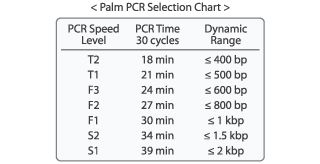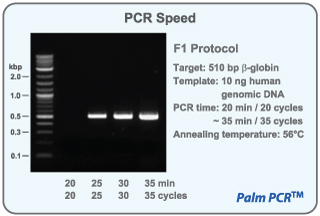Overview
Palm PCR device is loaded with fully validated operation protocols that enable ultra-fast nucleic acid amplification with high sensitivity.
In each protocol operation, selection of the PCR speed level makes the Palm PCR device perform PCR amplification at the pre-defined speed with
the dynamic range listed in the Palm PCR Selection Chart. A few examples are described below for the high performance of the Palm PCR system.
Contents







